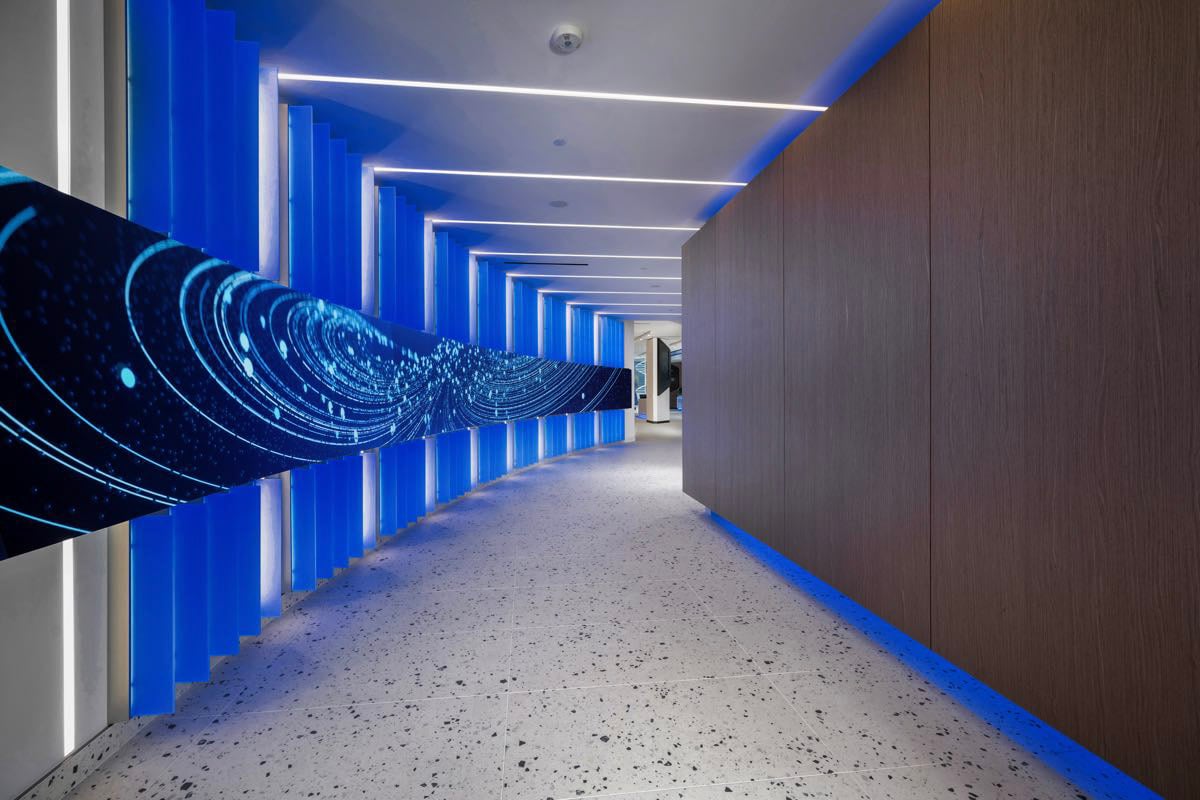As organizations rethink how people meet and communicate, the AV landscape is shifting quickly. Going into 2026, several themes are shaping decisions across IT, facilities, and leadership teams. These conversations highlight a future where systems are more connected, more manageable, and more aligned with how people work every day.
Below are the eight topics driving the most discussion.
1. AV-over-IP and Software-Driven Systems Are Becoming Standard
More organizations are moving AV to the network to gain scalability, predictable updates, and easier long-term management. AV-over-IP can reduce proprietary hardware, supports remote monitoring tools, and creates consistent experiences across multiple locations. This transition allows IT teams to treat rooms like any other networked asset.
2. Digital Signage and LED Video Walls Are Surging
Digital signage is now a central communication tool for offices, campuses, and public spaces. Cloud-based platforms, templates, and enterprise scheduling offer a consistent way to deliver messages across many endpoints. LED video walls continue to grow in popularity, offering seamless visuals, flexible sizing, and stronger brand impact compared to traditional displays.
3. Better Audio Is Back in Focus
Clear audio remains the most important part of any meeting. Organizations are prioritizing modern microphones, acoustic treatments, and smarter DSP tuning to eliminate fatigue and reduce troubleshooting. Better audio doesn’t just make conversations clearer — it helps maintain attention, keeps participants engaged, and reduces the cognitive load that comes from straining to hear.
4. The Role of the Integrator Is Shifting
Integrators are increasingly seen as strategic partners, not just installers. In 2026, organizations will lean on them for network alignment, user experience, room standards, and long-term system health. While many IT firms are dipping a toe into AV, the smartest move is still to rely on true AV subject matter experts—because great AV is as much art as it is technology.
5. AI-Driven Meeting Experiences
AI is showing up throughout the meeting experience, from adaptive camera framing to noise reduction and automatic audio mixing. These features run quietly in the background to make technology easier for everyone. AI is also extending beyond the meeting itself, generating follow-up summaries, action items, and key takeaways that keep teams aligned and reduce administrative work.
6. LED Video Walls Becoming a Primary Display Choice
LED continues to gain momentum as the preferred display technology for larger rooms and high-visibility spaces. In addition to superior brightness and color performance, LED offers the ability to create unique aspect ratios and custom layouts that aren’t possible with traditional displays. This flexibility makes LED a strong option for modern visual communication strategies.
7. Network Monitoring and Day-2 Support Expectations
As AV becomes more integrated with IT, leaders expect real-time visibility into devices and rooms. Remote monitoring, proactive alerts, structured firmware updates, and uptime reporting are becoming essential. Reliable Day-2 support keeps systems consistent, minimizes downtime, and helps teams stay productive.
8. XR, Simulation, and Virtual Collaboration Spaces
XR is emerging as a valuable tool for planning, training, and collaboration. These environments help teams visualize spaces, explore design ideas, and make decisions more confidently. As an interactive design tool, XR helps mitigate the unforeseen issues that traditional 2D drawings can’t reveal, giving teams clarity before construction or installation begins.
Looking Ahead
These trends reflect an AV landscape that is becoming more connected, more IT-aligned, and more focused on long-term reliability. As organizations continue modernizing their spaces, these topics will shape how they plan, design, and invest. Detailed deep-dive blogs for each of these themes will follow.
Want help exploring any of these topics? Our team can walk you through what they mean for your spaces and your users.

